In zoology, the term “bipedal” refers to animals that use only two legs for walking. There are several groups of modern species considered habitual bipeds, meaning two-legged walking is their normal mode of travel. But a larger number of species use a bipedal gait only briefly. Discover the animals that walk on two legs, whether habitually or periodically. And learn about their other traveling habits.
Kangaroo

Kangaroos
hop on two Z-shaped legs. They can hop up to 43 miles per hour and sometimes walk on five “legs,” using their tails to move forward.
©Katarina Christenson/Shutterstock.com
Kangaroos move about their open plains habitats by jumping and hopping on their Z-shaped hind legs. Their powerful, muscular legs propel them forward up to 43 miles per hour! Their large tail helps them balance as they sit and move. And they sometimes walk on five “legs,” using their hind legs, forelimbs, and tail to move forward. However, this position doesn’t allow for very fast travel. Kangaroos can also only hop forward. They are not capable of hopping backward, as their thick tail only keeps them balanced for forward-moving travel.
Gorilla
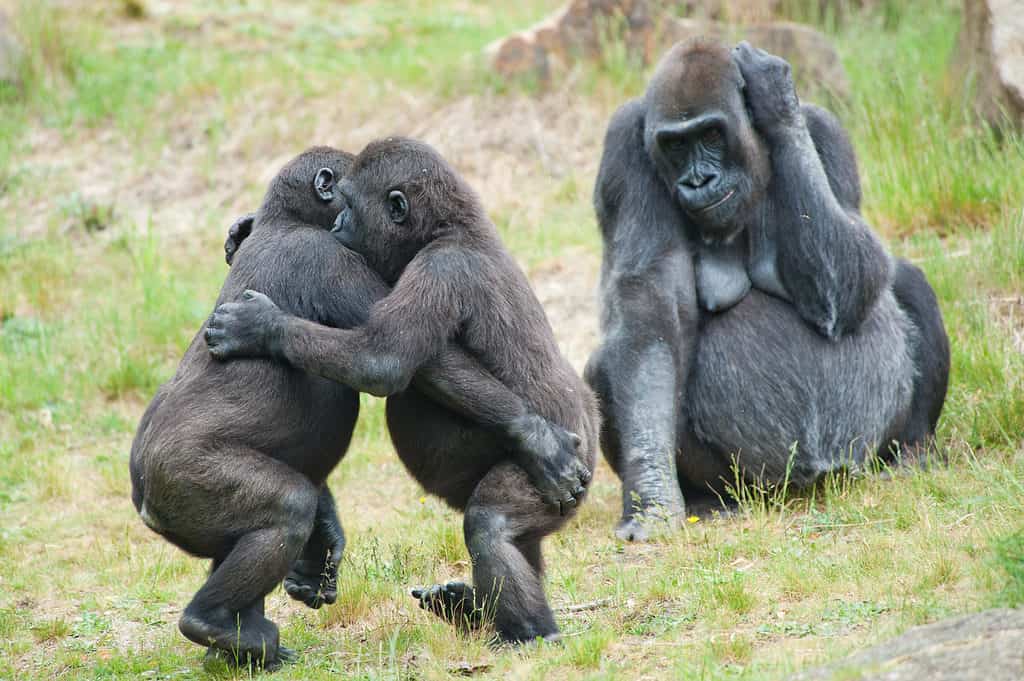
Gorillas primarily move on all fours, but they also stand and walk on two legs.
©Eric Gevaert/Shutterstock.com
Habitually, gorillas are quadrupeds, meaning they move on all fours. But these primates can also stand and walk on two legs much like humans. Some, especially those bred in captivity, may even prefer to walk this way. Their typical form of movement, however, is called “knuckle-walking.” Knuckle-walking is when a primate moves by putting weight on the tops of its knuckles versus using its palms. But when they’re not moving swiftly on their knuckles or climbing trees, you can find them standing around and walking short distances on two legs with their arms held slack by their sides.
Pangolin

Pangolins can walk on their hind legs with their front limbs off the ground and their tail used for counter-balance.
©Positive Snapshot/Shutterstock.com
Also known as the “artichoke with legs,” the pangolin is similar to an anteater but is covered in keratin scales that act as armor. These mammals typically shuffle about on all fours, curling their claws under and walking on their knuckles. But they also walk on their hind legs with their front limbs off the ground and their tail used for counterbalance. They move pretty slowly and stop often to rise on two legs and sniff the air. However, they can run up to five miles per hour if the occasion arises.
Chimpanzee
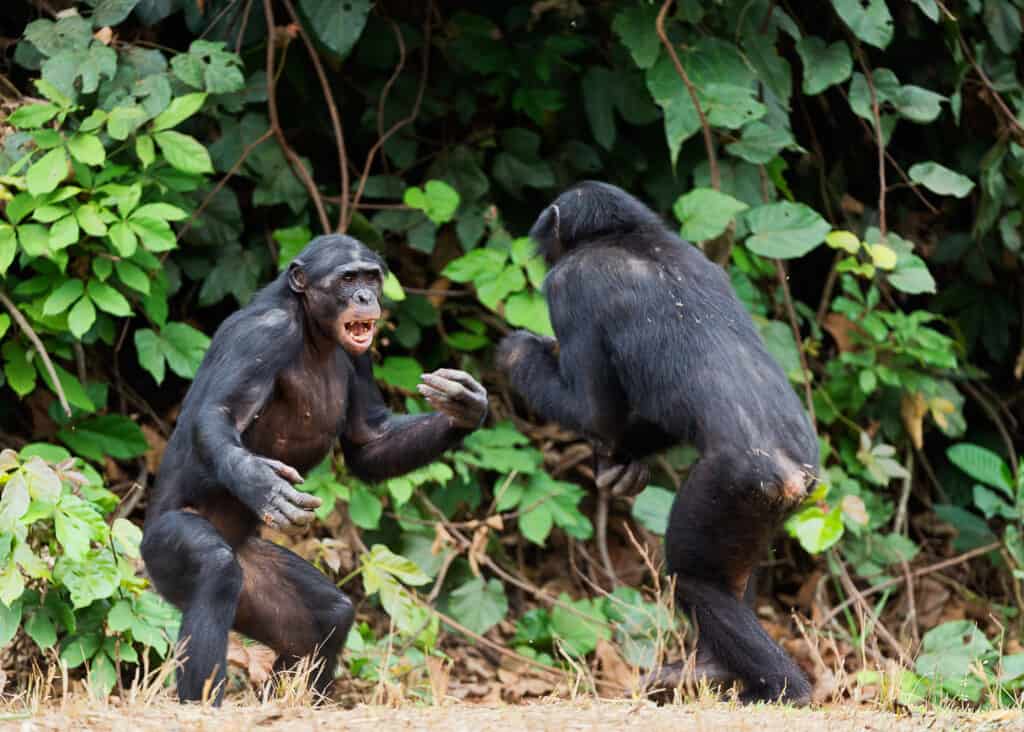
Chimpanzees will often stand up and survey their environments. And they can even walk on two legs for over half a mile.
©iStock.com/USO
Like other primates, chimpanzees prefer to get around by walking on their hind legs and the knuckles on their forelimbs. The knuckle walk suits them best for their day-to-day activities, but these monkeys can also move on two legs. They will often stand up and survey their environments. And they can even walk on two legs for over half a mile. But their skeletons do not support walking on two legs regularly. Their stiff backs, long arms, and short legs are more suited for climbing and maneuvering as a quadrupedal.
Kangaroo Rat
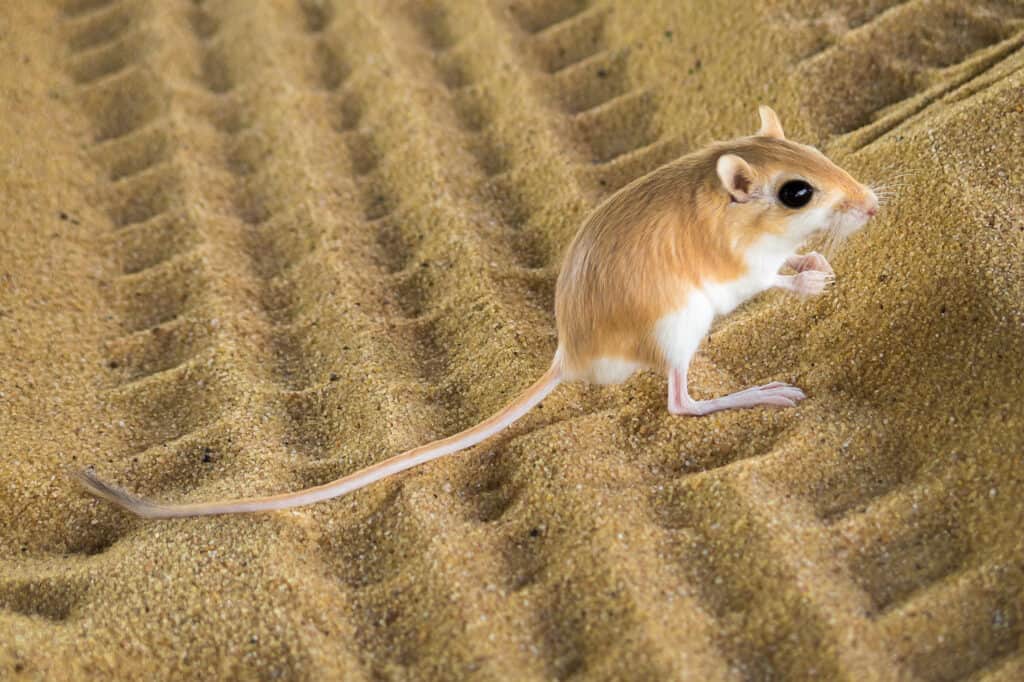
The kangaroo mouse hop around the desert on two hind legs.
©Been there YB/Shutterstock.com
Named after the bipedal marsupial, kangaroo rats hop around the desert on two hind legs. They are only about the size of a human fist, but they are speedy and agile. These rats can leap a distance of up to nine feet, hopping around six miles per hour. They can also quickly change direction while jumping, using erratic movements to escape predators. And when caught in an attack, they will use their hind legs to karate-kick mid-air. Rattlesnakes don’t stand a chance!
Basilisk Lizard
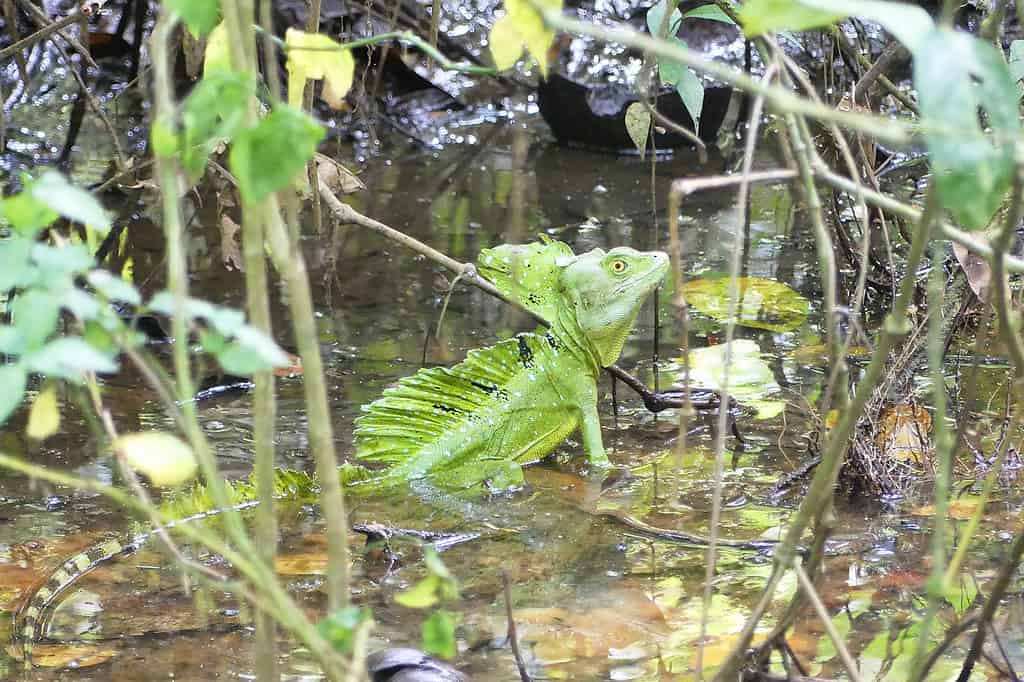
Green basilisk (
Basiliscus plumiforms) or Jesus Christ lizard. This impressive lizard can run over water! This one takes a rest.
©fernandoul/Shutterstock.com
Basilisk lizards are unusual creatures. Nicknamed “Jesus lizards,” they can run on water, albeit not as gracefully as Jesus. While these lizards spend most of their time basking in the sun or foraging for food, they can also run on their hind legs when spooked. They have been known to do this on land and the water’s surface. And they sprint so fast they can reach over seven miles per hour. When running on water, they can reach about 15 feet before gravity takes over, and they have to swim.
Ostrich

Ostriches use their six-foot wingspan as rudders, helping them change direction while running.
©iStock.com/slowmotiongli
The ostrich is a heavy-bodied flightless bipedal bird. They have long, powerful legs that propel this large bird forward, covering 16 feet in a single stride. Ostriches are the fastest-running birds in the world and can reach impressive speeds of up to 43 miles per hour, easily keeping pace with moving cars. While they can’t fly, their wings are not just for show. They use their six-foot wingspan as rudders, helping them change direction while running, which is not a simple task when they weigh nearly 300 pounds.
Gibbon

The gibbon walks on two legs when it’s not swinging from tree to tree.
©Vassil – Public Domain
Gibbons are the most acrobatic of all the apes. Brachiating is their main form of locomotion, meaning they swing from trees using their arms. And they can reach speeds of up to 35 miles per hour and leap distances of 50 feet. Swinging may be their main transportation, but these primates also walk on two legs. Their arms are 1.5 times longer than their legs, so it better suits them to walk on their hind legs while on the ground. Gibbons walk more on two legs than any other non-human primate, accounting for about 10% of their locomotive behavior.
Wallaby
Like the kangaroo, wallabies don’t move their legs independently. Instead, they hop around their environments on their two hind legs. They use their tails for balance, which also acts as a spring, bouncing them along. Hopping is their primary form of transportation, and they average about 15 miles per hour but can reach nearly 30 miles per hour if need be. They will also move on all fours when attempting to travel at faster speeds. Their long feet have a modified grip that helps them grip their rugged terrain.
Penguin
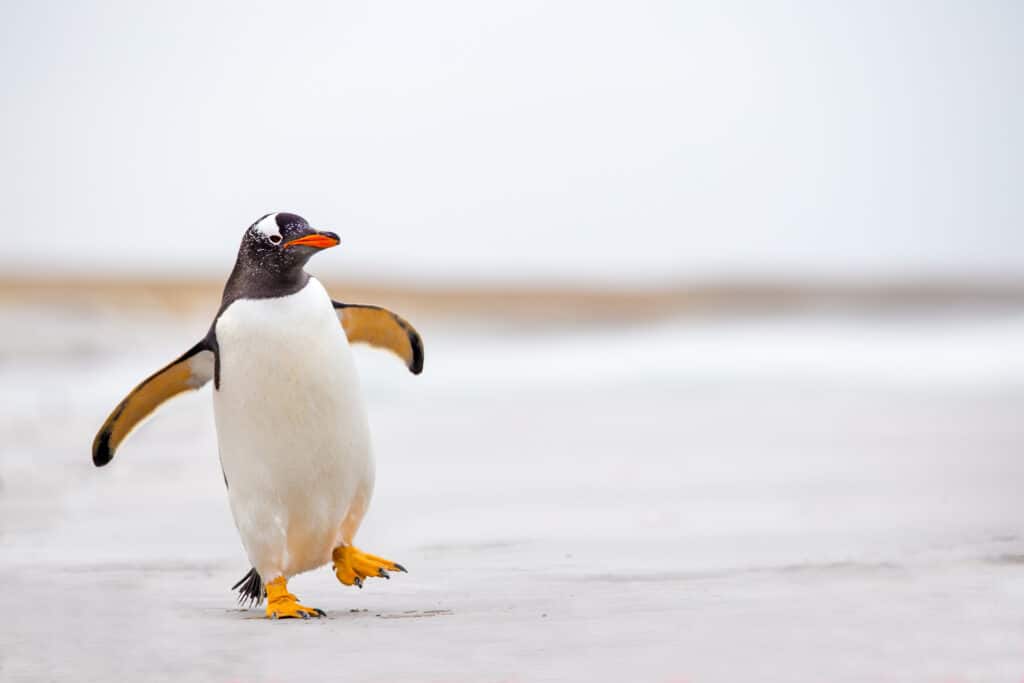
Penguins waddle on two legs, running at a forward angle when necessary.
©iStock.com/fieldwork
Like all birds, penguins are bipedal animals. They walk on two legs in an upright stance, as they waddle and shuffle along the ice. These birds do not fly, but they have other modes of transportation other than slow shuffling. To get to their destination faster or escape predation, penguins will hop or run with their bodies positioned at a forward angle, reaching up to five miles per hour. But these creatures are most graceful and swift when swimming and diving. Their fins act as paddles that propel them in the water at speeds up to 25 miles per hour, giving them the appearance of flying when they break the surface.
Flamingo

Flamingoes are most often found walking and wading in shallow water on two legs.
©Ondrej Prosicky/Shutterstock.com
Since flamingoes are birds, they, too, are bipedal animals. These bright pink birds are a species most often found walking and wading in shallow water on two legs. Wading birds use their legs for more than just walking. Flamingoes use their webbed feet to stomp the muddy water, helping their food sources float to the surface. They walk easily on two legs and can even run when they feel threatened. They will also swim if they get too far out in deep water, and they will fly short distances.
The photo featured at the top of this post is © paula french/Shutterstock.com
Thank you for reading! Have some feedback for us? Contact the AZ Animals editorial team.







